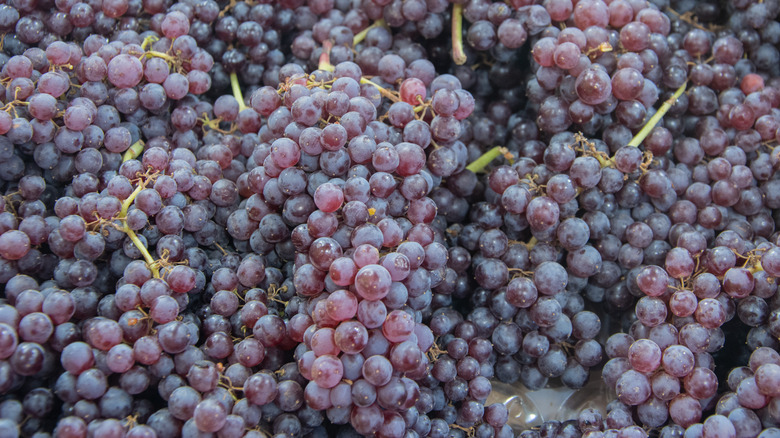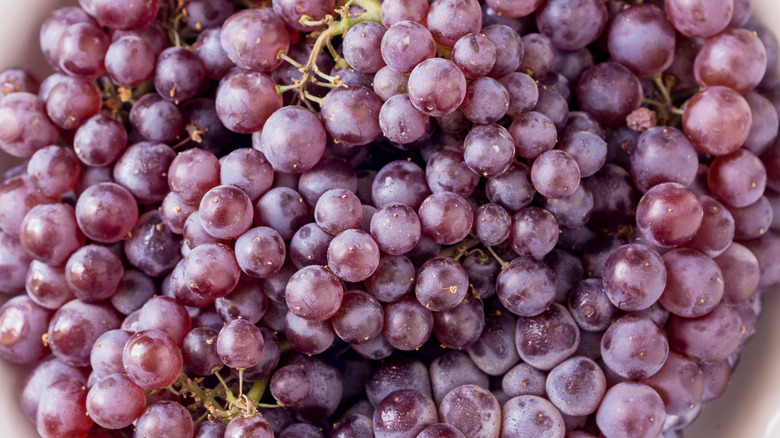What Makes Champagne Grapes Unique?
Grapes have been depicted in religious texts, songs, and recipes for as long as anyone can remember. Archaeologists report that there is evidence that humankind has been cultivating grapes since the Neolithic era, and that by 4000 BC, the practice extended all the way across Asia Minor into Egypt, migrating westward as the Hittites migrated towards Crete and Thrace (via University of Missouri).
There are tons of different kinds of grapes harvested throughout the world today, but for the most part, we divide grapes between the kind we eat and the kind we drink. According to Harvest to Table, European grapes (which are now grown all over the world) go by the Latin name Vitis vinifera, and are the kind commonly turned into wine; American grapes, or Vitis labrusca, are often the kind we turn into jelly and grape juice. But there are exceptions to every rule, and one European grape that we rarely use to make wine, but often eat, is the Champagne grape.
Champagne grapes aren't made for wine
To dispel any confusion right off the bat, actual Champagne – the wine — is grown and produced solely in Champagne, France, and is traditionally made of Chardonnay or Pinot Noir grape varietals (via Wine Enthusiast). But Champagne grapes are never used in Champagne wine, and they are rarely, if ever, fermented today.
So, why the name? According to Minneopa Orchards, Champagne grapes, aka Corinth grapes or Zante Currant grapes, have super small berries that are visually marketed as Champagne wine grapes because of their size, and can come in red or white. Because of their tiny size and bubble-like shape, Champagne grapes are pretty to photograph, which is what lead to them being called Champagne grapes, due to a photo shoot where photographer placed them next to a flute of Champagne (via Delighted Cooking).
Specialty Produce reports another strange aspect about the Champagne grape, which is that it is a Parthenocarpic grape, which means that it is a rare kind of fruit that has absolutely no natural seed production — making them easy to pop in your mouth and go. Ancient Grecians have been consuming them since before the birth of Christianity, and even though this edible grape isn't as popular as some American table grapes when it comes to consumption, it isn't going away anytime soon.

